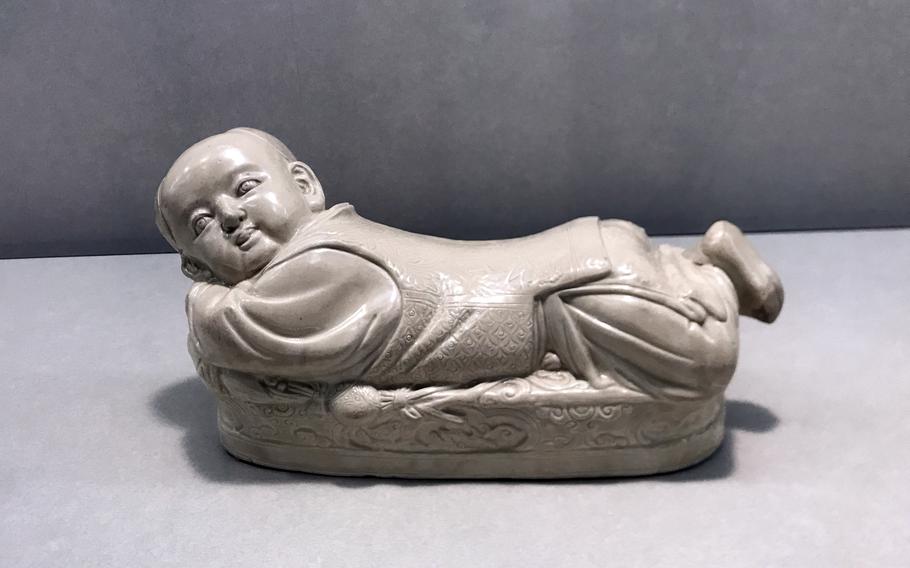
A 1,000-year-old porcelain pillow is displayed at the National Palace Museum in Taiwan. (Seth Robson/Stars and Stripes)
During China’s Cultural Revolution of the 1960s and ‘70s, mobs of communist Red Guards destroyed much of their nation’s cultural heritage.
However, Chinese Nationalists retreating to Taiwan in 1949 had taken with them hundreds of thousands of precious relics from Beijing’s Forbidden City and other parts of China.
Jade objects, Ming vases, paintings, ancient weapons and curios spanning 8,000 years of Chinese history are on display at the National Palace Museum in Taipei.
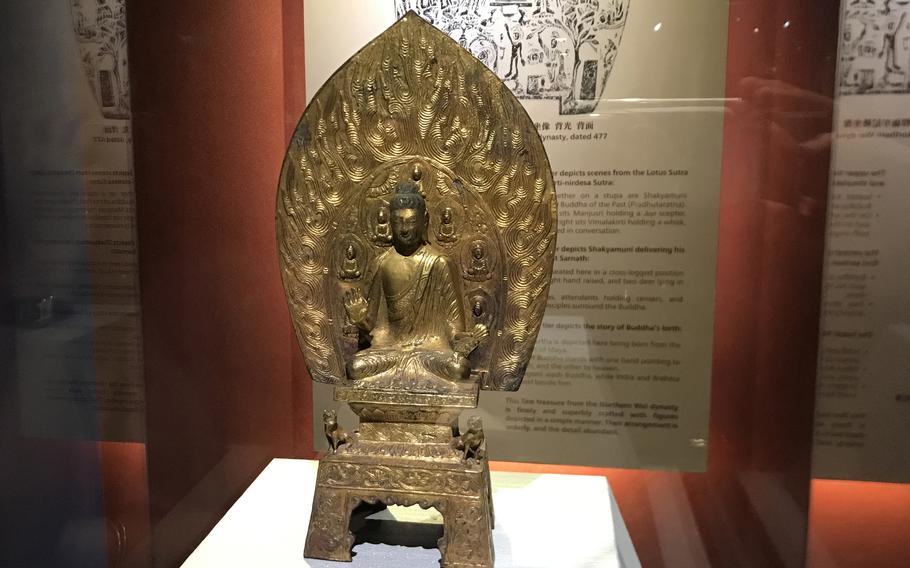
A bronze Northern Wei dynasty Buddha from the year 477 is displayed at the National Palace Museum in Taiwan. (Seth Robson/Stars and Stripes)
You can browse the museum’s galleries and learn about the precious objects and their place in China’s rich history with the help of information panels, in English, and an audio guide.
Some quirky works of art are among the most popular items in the collection.
The Meat Shaped Stone, from the Qing dynasty, for example, was carved from jasper and dyed to resemble a succulent piece of pork marinated in soy sauce.
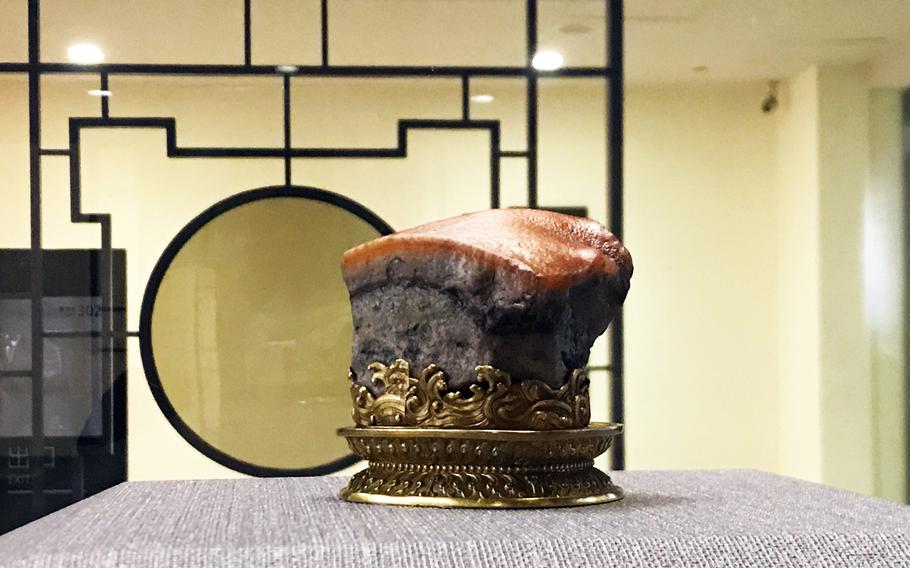
The Meat Shaped Stone at the National Palace Museum in Taiwan was carved from jasper and dyed to resemble a succulent piece of pork marinated in soy sauce. (Seth Robson/Stars and Stripes)
A jadeite cabbage, with a locust and a cicada perched on it, came from the Forbidden City’s Yung-ho Palace, which was the residence of the Guangxu Emperor’s (1875-1908) consort Jin, according to the museum’s website.
“For this reason, some have surmised that this piece was a dowry gift for Consort Jin to symbolize her purity and offer blessings for bearing many children,” the website states.
Paintings in the museum’s collection show nature scenes as well as studious scholars, playful children and lively musicians.
You can check out a range of old swords and spears, including ceremonial weapons carved from jade.
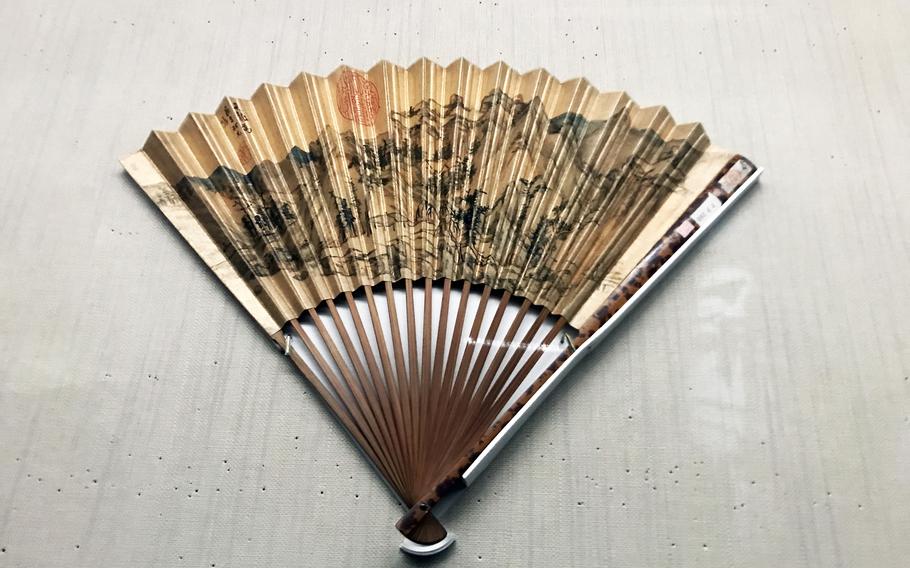
A golden fan is displayed at the National Palace Museum in Taiwan. (Seth Robson/Stars and Stripes)
The museum has a large collection of ancient Chinese kitchen accessories, including teapots, wine vessels, pans and some massive cauldrons.
One of the country’s early rulers, King Wu of Qin, who reigned from 310 to 307 B.C., lost his life powerlifting a heavy bronze cauldron in a show of strength. King Wu was an avid wrestler but not renowned for his intellect.
The collection includes a planter box holding a coral carving of the planetary deity Kui Xing clutching a representation of the Big Dipper.
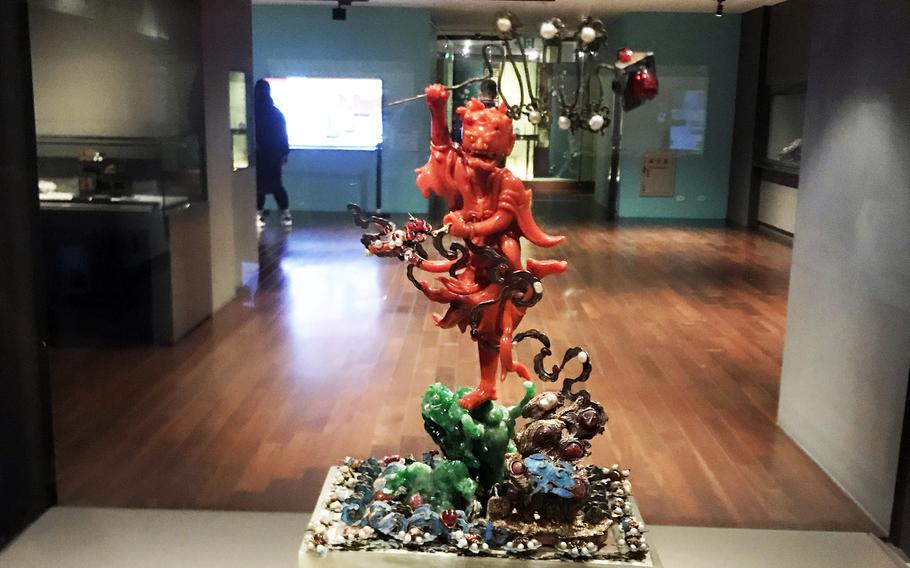
A coral carving of the planetary deity Kui Xing clutching a representation of the Big Dipper is displayed at the National Palace Museum in Taiwan. (Seth Robson/Stars and Stripes)
Legend has it that the Kui Xing was a highly educated scholar, but his ugly appearance prevented him from passing the civil service examinations, according to the museum’s website. In a fit of anger and resentment, he tried to drown himself but was saved by a fish dragon, transformed into the celestial head of the Big Dipper and was put in charge of determining the outcome of examinations and career advancement.
Last year, amid efforts to safeguard Ukrainian museum treasures from Russian attacks, Taiwanese officials expressed concern that the valuable collection could be damaged if China tries to invade the island.
Taiwan’s massive collection is too large to fully display but it will take you hours to explore all the interesting things in the museum on any given day.
On the QT
Directions: Buses travel to the museum from the Taipei Metro’s Shilin, Jiannan Road and Dazhi train stations. 222, Section 2, Zhishan Road, Shilin District, Taipei
Times: 9 a.m. to 5 p.m., Tuesday through Sunday; also open on national holidays.
Costs: $350 Taiwan dollars (about $11); $150 for those with an international student ID.
Information: Phone: 2-2881-2021; online: www.npm.gov.tw